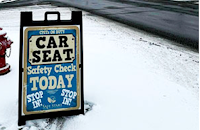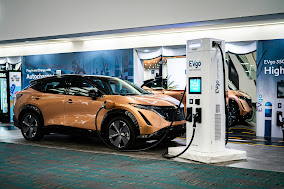 |
Firefly Petunia flowers emit light.
(Light Bio photo via Lancaster Farming) |
With spring and summer come abundant flowers and plants, but in the botanical world, there's a new flower in town -- a bloom that will delight and surprise. "It's called the Firefly Petunia, the first commercially available bioluminescent plant,"
reports Therese Ciesinski of
Lancaster Farming. "The scientists at
Light Bio, Inc., a biotechnology firm in Sun Valley, Idaho, created it by genetically modifying herbaceous plants using genes from bioluminescent mushrooms. . . .These flowers don't reflect the light. The leaves and flowers of this plant have been bred to emit the light."
As a parody of the 1970s sci-fi craze,
The Muppet Show put its own space crew, "Swinetrek," into orbit in its famous comedy sketch, "
Pigs in Space!" While no pigs have been sent into space yet, aeronautic companies are testing ways to put an equally unusual animal into orbit -- earthworms. "With several national space agencies hoping to establish permanent bases on the moon, humans may find themselves sharing the lunar surface with some unexpected fellow explorers: worms,"
reports Adam Kovac of
Ambrook Research. "Many species of worms can break organic waste into vital nutrients. . . . The critters have proven in the past to be resilient to the stresses of space travel."
 |
Symplocarpus foetidus or skunk cabbage
can melt snow. (Wikipedia photo) |
As spring emerges early this year, nature's wonders bloom in glory and subtle delight. For wary nature lovers, the Earth's warming trend can remind them of how vulnerable life is. From thawing frogs to self-heating and somewhat stinking skunk cabbages,
writer Daryln Brewer Hoffstot of
The New York Times looks at spring and wonders how much of nature is in danger of disappearing.
Humans aren't the only species seeking global domination. Ants are right there with us. "Global ant societies are not simply echoes of human struggles for power. They are something new in the world, existing at a scale we can measure but struggle to grasp: there are roughly 200,000 times more ants on our planet than the 100bn stars in the Milky Way,"
reports John Whitfield of
The Guardian. "Ants form what the ecologist Mark Moffett calls 'anonymous societies,' in which individuals from the same species or group can be expected to accept and cooperate with each other even when they have never met."
 |
Phaeodarians are a type of single-celled protist—not animal, plant, or fungus, which can be found
in deep sea water. (World Register of Marine Species photo)
|
The phrase "a drop in the ocean" may refer to something unimportant, but in fairness, it is inaccurate. A lot is going on in a single seawater drip: "Drops of seawater teem with life. Scientists estimate that some may contain as many as a million organisms, most too small to see with the naked eye,"
reports Annie Roth of
National Geographic. "But put a drop under a microscope, and you will likely find free-swimming fish larvae, crawling copepods, and peculiar protists."
 |
Ilene is a F3 Valais Blacknose ewe.
(Photo by Dan Sullivan, Lancaster Farming)
|
"Question: What's cute and cuddly, mows your lawn and costs $20,000? Answer: An F5 domestic purebred Valais Blacknose sheep,"
reports Dan Sullivan of
Lancaster Farming. With their fluffy curling hair and expressive faces, the Valais Blacknose Sheep might deserve to be at the top of your lovability list. Betsy Myers of
Valais at Grateful Acres farm in Berk County, Pennsylvania, told Sullivan: "There are only about 19,000 purebred Valais Blacknose sheep in the world. The domestic breed originates from the Valais region of Switzerland."
Sullivan adds, "Myers, who works full time as a USDA plant health safeguarding specialist, did not get into sheep breeding for the cash. . . . It was more the cute factor."














